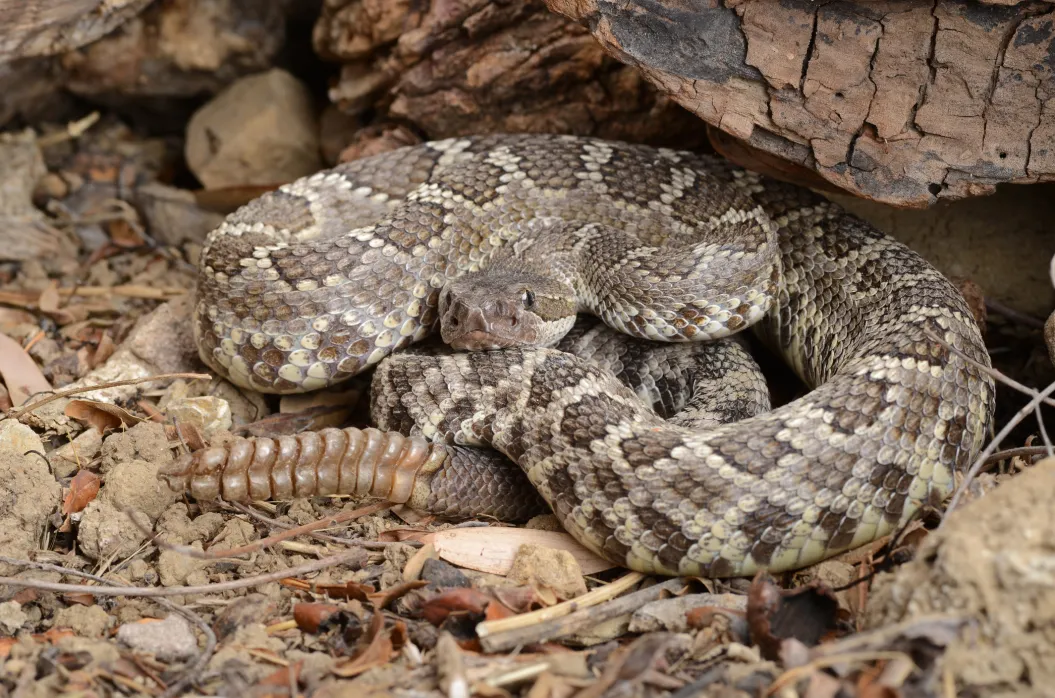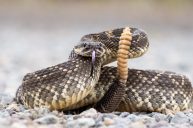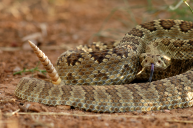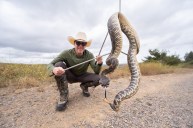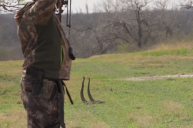On Friday, June 9th a hiker on a section of the Pacific Crest Trail in Southern California was bitten by a rattlesnake. Brian Baskin, a paramedic with Liberty Ambulance and Captain of the Kern Valley Search and Rescue volunteer team, was one of the first responders on the scene and says that the individual mistakenly stepped on the snake while hiking on the trail. The hiker was a part of a group and they were able to contact medical immediately for help with their location. After being air-lifted to a hospital, the hiker confirmed their health and discharge from the hospital with The Trek.
This incident is not isolated. In this area of Kern County, Baskin estimates that anywhere from 4-12 bites happen each year to hikers or other outdoor recreationalist. He predicts that this year will fall on the higher side of this estimate due to increased water that allows for increased rodent populations that rattlesnakes feed on.
Kern County certainly holds no monopoly on rattlesnakes. Because of their ubiquitousness and great adaptability, there is a high chance that you will be traveling through rattlesnake territory at some point this summer. While this is in no way to dissuade you from venturing outside, it is to help educate and empower you in times of crisis. The following information, sourced from two experts, is vital to your safety in rattlesnake country. Here's everything you need to know about how to protect yourself from rattlesnakes and what to do if you get bit.
Where Do Rattlesnakes Live?
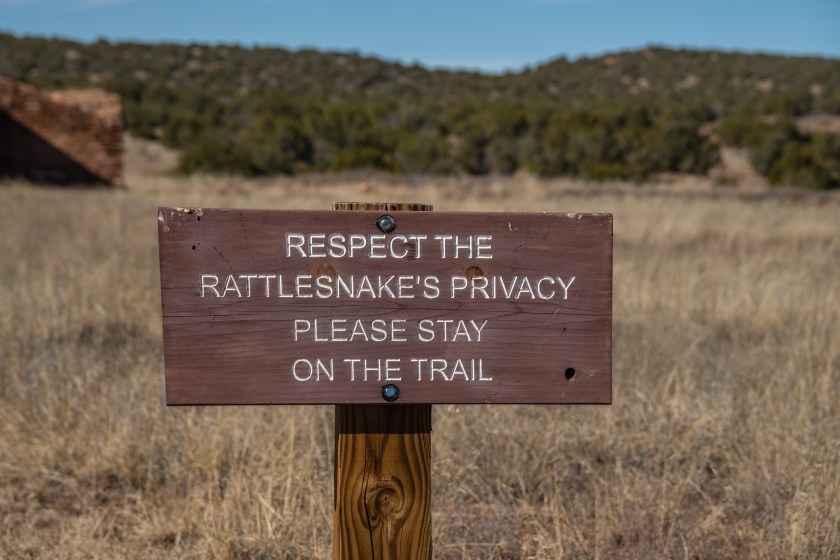
Getty
Though they are found most heavily in the southwestern states (Arizona claiming 13 species alone!), rattlesnakes can be found across the country. If the thought of a rendezvous with this reptilian induces the urge to board up your home, head to Alaska, Rhode Island, Hawaii, or Maine - the only states in the union void of this particular reptile - for your outdoor recreation.
The terrain in which rattlers operate includes rocky, sandy, and grassy areas. Snakes can be found near water and in desert environments as well. Baskin warns: "where people want to be the snakes typically want to be too for food and water."
"I tell people, you probably walk by dozens of them on your hikes and you don't even know it," Cale Morris, Venom Manager at Phoenix Herpetological Sanctuary, chimes in. "Hiding is what they're good at." The best way to avoid them is to stay on trails. "When you go off trail and you're walking around and rock climbing," Morris says, "you have a higher chance of getting accidentally bit."
Morris, says for rattlesnakes, it's "all about temperature." Being cold-blooded animals, snakes can only operate within the means of the heat they are adapted to. In general, "that's high 70s and low 80s," he confirms, although he warns that different species might be adapted to slightly cooler temperatures, especially those in higher elevations. "It does depend on where you're at and what you're talking about."
Rattlesnakes cannot survive when temperatures exceed the low 80s, so during summer months in hotter climates, snakes will be more active at night when temperatures are cooler. "They switch from day to night like nothing," Morris says. "It doesn't affect them."
What Does a Rattlesnake Sound Like?
The sound of a rattlesnake is eerily like that of a baby rattle or a maraca. However, you may not even hear a rattle when encountering a snake or before a bite. "They'll hide first," Morris says, "they're a little more prone to rattle when they're out in the open and they feel vulnerable."
He notes that when attacked, they rattle as a warning. If you hear a snake rattling, give it space and leave it alone. Do not try to intimate it by throwing rocks or sticks. Do not try to pick it up. "Rattlesnakes are not aggressive; they don't chase you," says Morris, "I've never been chased by a rattlesnake, even though I've caught thousands of them."
Are Rattlesnakes Poisonous?
While Baskin predicts that this year, there will be as many as 12 rattlesnake incidents in the Kern Valley region, it is important to note that he caveats that with the sheer number of outcomes an encounter with a rattlesnake can produce. It is estimated that 33% of snake bites do not include venom at all. Baskin says that each snake doles out their own special dosage of venom and Morris confirms, stating that because of the massive energy it takes to produce venom "studies show they control how much venom they give, so they don't give it all at once." Besides dosing irregularities, sometimes only one fang will pierce the skin or the fangs will merely scrape the skin instead of penetrating. All of this affects how poisonous a rattlesnake may be.
The most immediate physical effects of a bite will be extreme pain and swelling localized to the site of the bite. There might be redness or bleeding as well. In severe cases, a bite can cause fever, headache, convulsions, and numbness. Rattlesnake bites can be fatal.
If you are in rattlesnake territory, you are probably in the territory of other, non-venomous snakes as well. While a bite from a non-venomous snake does not pose the same health risks as that of a rattlesnake, any snake bite has the potential for serious infection and all should be treated by a medical professional. Whether or not there is venom, Baskin says that "you are going to have to deal with some sort of traumatic wound...which probably requires antibiotics."
How to Stay Safe
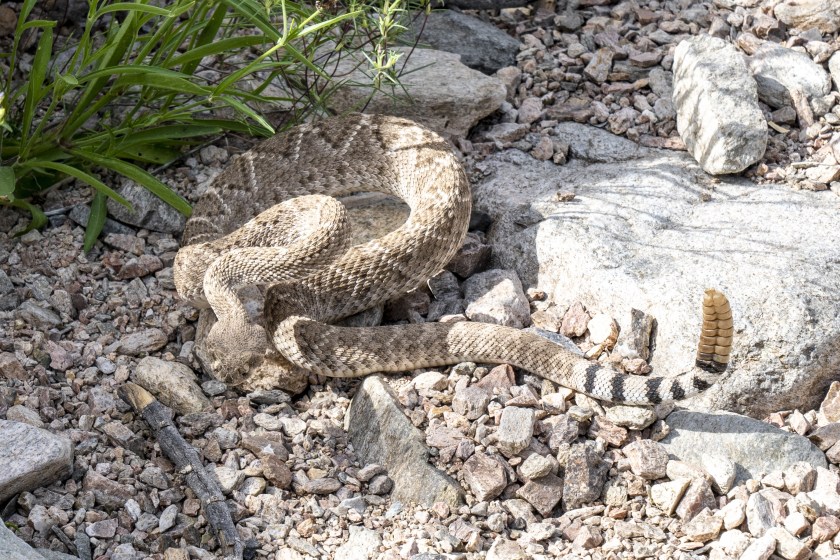
Getty
"Preparation is always really important," Baskin emphasizes. For anyone venturing into the wilderness, he recommends that they bring some sort of satellite communication device that they can rely on when there is no service. "For most people, you may never use it, but for those that have a snake bite out in the backcountry, it may be the difference between life to death," he says.
Though Morris admits there is little else in gear that you can bring to prepare for a rattlesnake crisis, planning to hike with a friend could be another life-saving decision. "[I] never recommend being out in the wilderness like that by yourself," Baskin says. When a crisis like a rattlesnake bite occurs, buddies can help you get to safety and keep you calm. The hiker that was bit on the PCT was with three others who were able to help.
What to Do If Bit by a Rattlesnake
Baskin gives us his checklist of actions to take after a rattlesnake bite that can help save your life. Seeking medical attention and staying calm are the most important things here.
-
- Do not try to handle the snake. Let it go on its way. Further agitation may cause another injury for you or another member of your party. Remember you don't know how much venom it has pumped into the initial bite and may have more to dose out.
- Call for help immediately. "The first thing you need to be focused on is getting medical attention," Baskin says. "Medical attention is the priority." If you do not have a way to call for help, start setting small goals for evacuation while going through the following steps and don't get overwhelmed by the big picture. "Developing a plan, keeping a positive attitude, and following the steps that we provided are going to be the critical things for survival."
- If you can, note the appearance of the snake. This will be helpful for medical professionals to properly assess the type of snake and severity of the bite. If you can snag a picture, great. Note - do not ignore the following steps to attempt to get a better glimpse at the snake.
- Sit down and stay still. Baskin notes that an increase in blood flow will create more rapid envenomation in the victim's blood. "If you have a communication device and there's no reason to walk, you want to basically just stay calm and sit still where you're at and that will help slow the spread of the venom," he says. If walking is absolutely necessary, "minimize the walking that has to be done and minimize the gear that you have to carry," Baskin says. Keep your water, communication device, and bare essentials with you. If you are hiking with a friend, unload your equipment onto them.
- Stay calm. Staying calm and keeping the heart rate steady will also slow envenomation. How, may you ask, does one stay calm in such a situation? Baskin recommends "controlling your breathing and using mindful breathing techniques." He also notes that having a plan will give hope and provide a calmer reaction as well.
- Remove tight clothing or jewelry from the area of the wound. The area will swell and constrictions can be dangerous to the limb or body part. This includes tourniquets - do NOT tourniquet a snake bite.
- Keep your heart above the injury. "It'll keep the venom from getting to your heart and circulate it through your body, hopefully keeping it in that limb," Baskin says.
- Clean the wound. Use only soap and water to clean a snake bite wound. Do NOT apply ice or heat. Do NOT cut the wound or attempt to suck the venom out.
- Get to a hospital. Once at a hospital, victims will receive antivenom. The CDC recommends that rattlesnake bite victims should not drive themselves because there is a chance they become dizzy or pass out.
A special thank you to the incredible teams of volunteer search and rescue across the country who help us in life-threatening moments during our outdoor adventures. Without the prompt evacuation and care from teams like the Kern Valley Search and Rescue on June 9, there would be a higher number of wilderness fatalities. Because they are volunteer-based, they do need monetary support to continue their efforts, and any donations you can make to your local search and rescue would be extremely appreciated.
